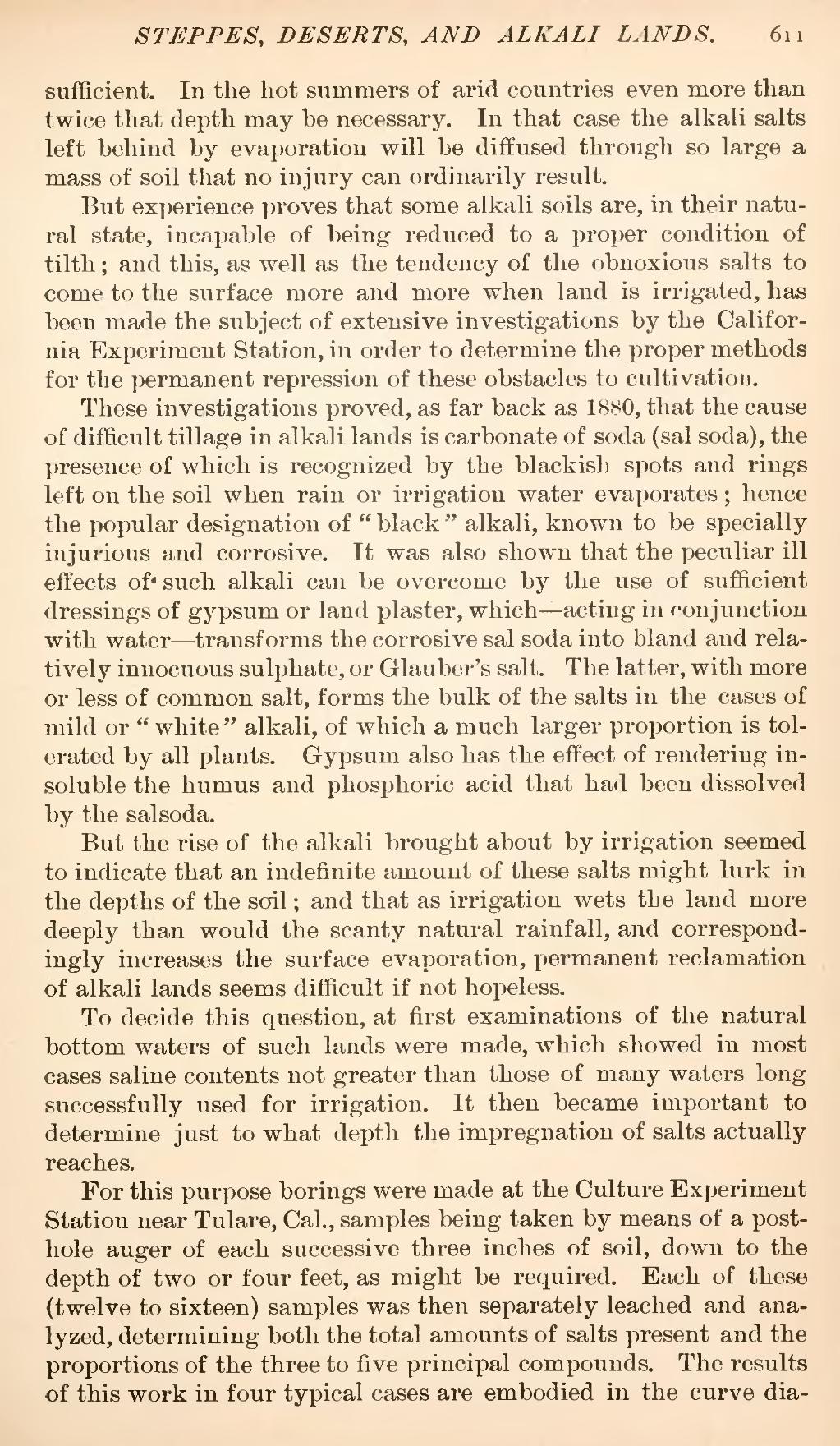sufficient. In the hot summers of arid countries even more than twice that depth may be necessary. In that case the alkali salts left behind by evaporation will be diffused through so large a mass of soil that no injury can ordinarily result.
But experience proves that some alkali soils are, in their natural state, incapable of being reduced to a proper condition of tilth; and this, as well as the tendency of the obnoxious salts to come to the surface more and more when land is irrigated, has been made the subject of extensive investigations by the California Experiment Station, in order to determine the proper methods for the permanent repression of these obstacles to cultivation.
These investigations proved, as far back as 1880, that the cause of difficult tillage in alkali lands is carbonate of soda (sal soda), the presence of which is recognized by the blackish spots and rings left on the soil when rain or irrigation water evaporates; hence the popular designation of "black" alkali, known to be specially injurious and corrosive. It was also shown that the peculiar ill effects of such alkali can be overcome by the use of sufficient dressings of gypsum or land plaster, which—acting in conjunction with water—transforms the corrosive sal soda into bland and relatively innocuous sulphate, or Glauber's salt. The latter, with more or less of common salt, forms the bulk of the salts in the cases of mild or "white" alkali, of which a much larger proportion is tolerated by all plants. Gypsum also has the effect of rendering insoluble the humus and phosphoric acid that had been dissolved by the salsoda.
But the rise of the alkali brought about by irrigation seemed to indicate that an indefinite amount of these salts might lurk in the depths of the soil; and that as irrigation wets the land more deeply than would the scanty natural rainfall, and correspondingly increases the surface evaporation, permanent reclamation of alkali lands seems difficult if not hopeless.
To decide this question, at first examinations of the natural bottom waters of such lands were made, which showed in most cases saline contents not greater than those of many waters long successfully used for irrigation. It then became important to determine just to what depth the impregnation of salts actually reaches.
For this purpose borings were made at the Culture Experiment Station near Tulare, Cal., samples being taken by means of a post-hole auger of each successive three inches of soil, down to the depth of two or four feet, as might be required. Each of these (twelve to sixteen) samples was then separately leached and analyzed, determining both the total amounts of salts present and the proportions of the three to five principal compounds. The results of this work in four typical cases are embodied in the curve dia-

